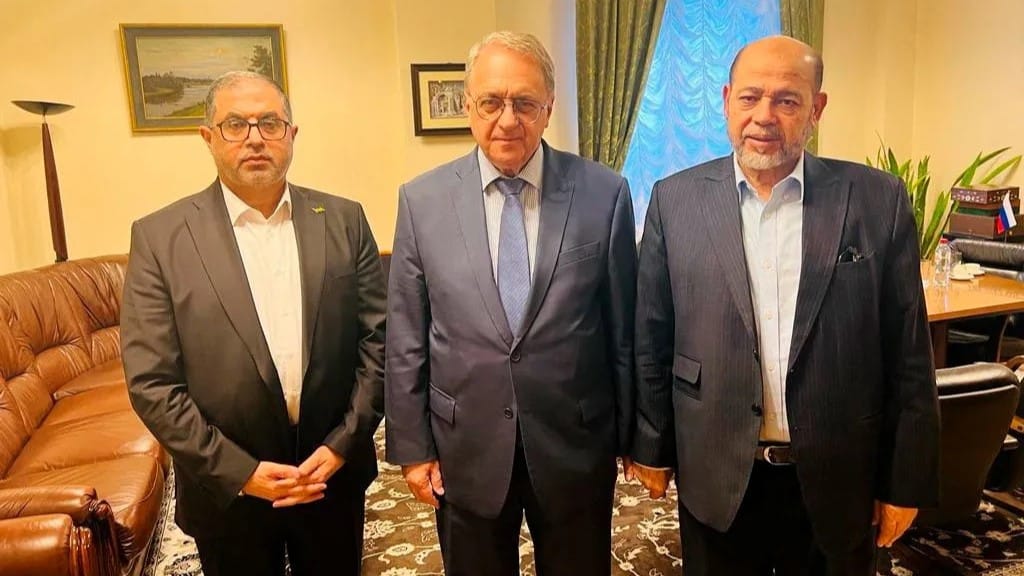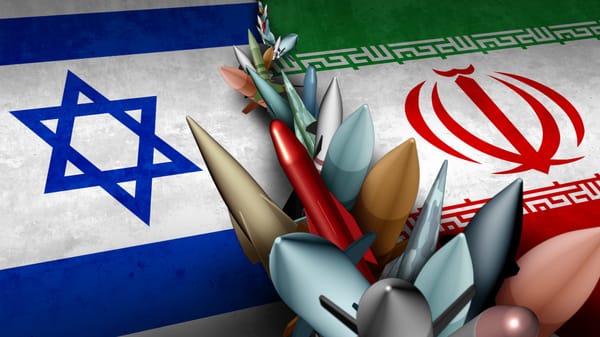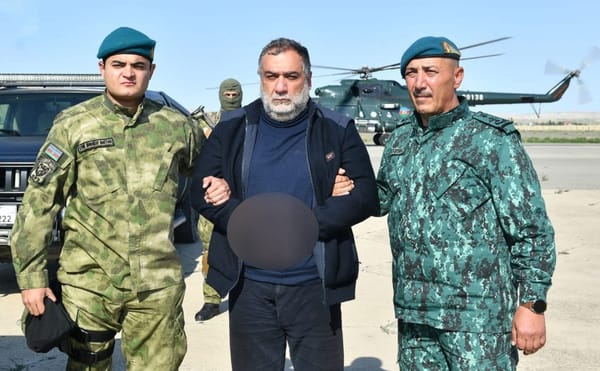Axis of Destabilization: Russia – Hamas – Iran

Why the civilized world struggles to counter an alliance relying on hybrid warfare and oil-market blackmail?
Over the past decade and a half, a unique alliance has formed globally, consisting of three political entities—Iran, Russia, and Hamas—that function as a single organism. Despite the absence of formal treaties, their "symbiosis" is evident: they closely coordinate military and political actions, exchange technology and funding, and seek to undermine the global order based on law and humanitarian values. The hallmark of this alliance is its ability to combine overt military actions with subtle forms of blackmail and propaganda, undermining international institutions from within.
The emergence and strengthening of this "axis of destabilization" is often explained by experts through the convergence of ideological frameworks and interests. Iran, aiming to expand its influence in the Middle East; Russia, driven by revanchist ambitions; and Hamas, serving as a base for terrorist attacks against Israel—all find common benefits in maintaining prolonged tension. They profit from rising oil prices, diverting global attention from Ukraine to Middle Eastern conflicts, and eroding trust in democratic institutions.
Below is a detailed analysis of how this alliance operates, the coordination mechanisms it employs, and why the civilized world will find it difficult to defend itself unless it transitions to a "real and harsh war" against such a configuration.
Unified Neural Network: Coalition of Hybrid Warfare
Iran, Russia, and Hamas constitute a distinct "organism" with a shared "circulatory" and "neural" system. Attention was first drawn to this phenomenon around 2014, when Russia annexed Crimea and initiated war in the Donbas. At the time, an observer labeled Russia as "Hamas with an atomic bomb," highlighting the Kremlin’s increasingly unpredictable and uncooperative behavior, akin to a terrorist group but possessing nuclear capabilities.
Later events confirmed this analogy. Hamas in Gaza acquired quasi-state characteristics but remained a terrorist organization. Russia, over recent years, transitioned from an authoritarian state to a totalitarian-like "community," portraying external aggression as a "holy war." Iran, meanwhile, continues its nuclear program, fortifying ties with radical groups, and utilizing proximity to strategically crucial waterways (Persian Gulf, Red Sea) to pressure the West.
This trilateral alliance requires no formal agreements; cooperation happens at the applied coordination level. For instance, Iran and Russia actively support Hamas, Hezbollah, and the Houthis with arms, technology, and money. The Kremlin provides political cover, hosting Hamas delegations in Moscow, shielding Tehran on international platforms, and assisting Iran in mitigating sanctions. It's well-known that Russia and Iran jointly develop and apply schemes to circumvent international financial restrictions, including cryptocurrency exchanges.
Notably, one such exchange—Garantex—was shut down due to accusations of money laundering and financing terrorist structures. Western intelligence indicated substantial sums passing through affiliated platforms destined for groups operating in Gaza and Lebanon.
Hamas serves as a "distraction factor": its actions shift global focus from Ukraine to Middle Eastern issues, creating anti-Israel and anti-Western narratives. Moscow and Tehran exploit this, playing the "defenders" of Palestinians. Consequently, Russia and Iran gain breathing space concerning Ukraine, focusing instead on escalating other conflicts to weaken the collective West.
A striking coordination example was Hamas's delegation visit to Moscow in March 2023, parallel to talks with Iranian representatives. According to sources, a planned attack on Israel—executed on October 7, 2023—was already discussed then. Moscow and Tehran reacted nearly simultaneously: media quickly justified Hamas's actions, and officials in Russia and Iran accused the West of "double standards."
Manipulation of Oil Markets: Key to Blackmail
One key instrument of the "axis of destabilization" is controlling global oil prices. When tensions around Gaza and Israel intensify, markets immediately respond with price increases. This volatility greatly benefits Iran and Russia, enabling extra profits from hydrocarbon exports.
According to public data (e.g., OPEC and the International Energy Agency), Iran increased oil production to 3.14 million barrels per day, 600 thousand more than in 2023. Amid high global demand and war escalation risks, even sanctions appear less intimidating; Iran effectively enjoys U.S. leniency to prevent "oil shocks."
Russia, with its vast oil production, benefits even more significantly since high prices offset losses from Western sanctions, channeling revenue directly into warfare in Ukraine. Sources indicate over 100 million tons of Russian oil bypassed Western price caps in 2024.
Thus, Hamas, triggering periodic conflicts, maintains high energy prices. These elevated prices enable the Kremlin and Tehran to sustain military programs and geopolitical strategies. In essence, by sparking Middle Eastern unrest, the alliance obtains strategic advantages and direct financial benefits.
Destruction of the World Order as the Main Goal
Analysts increasingly note that the primary objective of Russia, Iran, and Hamas is dismantling the international system established post-World War II. The pillars of this system include democratic values, energy security, and military-political alliances.
- Democratic values. Russia and Iran, through media and social network "activists," conduct campaigns discrediting Western countries as hypocrites and "true aggressors." Hamas intensifies these narratives with anti-Israel and antisemitic rhetoric, equating Israel with a "colonial regime" and the U.S. with a "new crusade."
- Energy security. By managing oil prices and threatening supply disruptions, the alliance targets European and Asian economies, undermining Western unity. Russia famously uses "gas weapons" against Europe, while Iran frequently threatens to block the Strait of Hormuz, crucial for global oil trade.
- Military-political alliances. Russia supplies Iran with advanced air defense systems to protect nuclear sites, while Iran provides drones for Russia's war in Ukraine. Hamas destabilizes the Middle East, fueling global anti-Israel sentiments, diverting significant diplomatic and military resources from the U.S. and allies, thus weakening collective Western resolve regarding Ukraine.
Together, this triad conducts hybrid warfare on multiple fronts, challenging the international community’s capacity for swift response.
Suicidal Core of the Axis
While Hamas promotes martyrdom and employs civilians as human shields, Russia openly discusses potential nuclear weapon use. Iran exacerbates tensions in the Strait of Hormuz and the Red Sea, creating conflicts threatening the global economy. All three share willingness to push situations to extreme limits.
Observers often view Russia as "chronic evil," periodically shaking the world through military aggression. Its current phase is notably dangerous due to the Kremlin’s refusal to recognize international rules or self-preservation instincts.
Russia's foreign policy revolves around denying universal moral and legal norms. Moscow views war as a permanent political tool, even considering diplomacy merely as warfare continuation by other means.
Parallels between Hamas and Russia run unexpectedly deep. Hamas promotes terrorist martyrdom promising paradise; similarly, Russia’s Orthodox Church effectively portrays battlefield death as a supreme act of patriotism, erasing sins.
Why Hamas and Russia Indoctrinate Children?
Indoctrination of youth is particularly alarming. Hamas organizes youth camps teaching weaponry and hatred towards Israel; schools use textbooks with formulas such as "kill the Jew."
In Russia, while not explicitly teaching "kill the Ukrainian," state initiatives like "Important Conversations," "Youth Army," and "patriotic education" clearly define enemies as those refusing Russia’s "highest mission." In occupied Ukraine, children receive pseudo-history negating Ukrainian identity.
Global Consequences and Real Danger
Experts argue the "civilized world" risks defeat against Russia, Iran, and Hamas without firm and consistent actions. Limited confrontation only assures Tehran, Moscow, and Gaza of impunity, while peace initiatives frequently lack substance.
Despite attempts by figures like former President Donald Trump, meaningful change remains elusive. Russia, Iran, and Hamas interpret concessions merely as weaknesses, encouraging further aggression.
Conclusion
Countering the Russia–Hamas–Iran triad requires Western and allied countries' unified awareness, coordination, and genuine readiness for decisive measures. The "axis of destabilization" comprehends only the language of strength; compromises are viewed as vulnerabilities.
Without a cohesive strategy in Washington and Brussels, each aggression wave by Moscow, Tehran, and Gaza risks irreversibly undermining human rights and international law-based systems. Time will reveal if the world possesses the determination and resources to confront hybrid aggression as decisively as mid-20th-century allies confronted totalitarianism.





